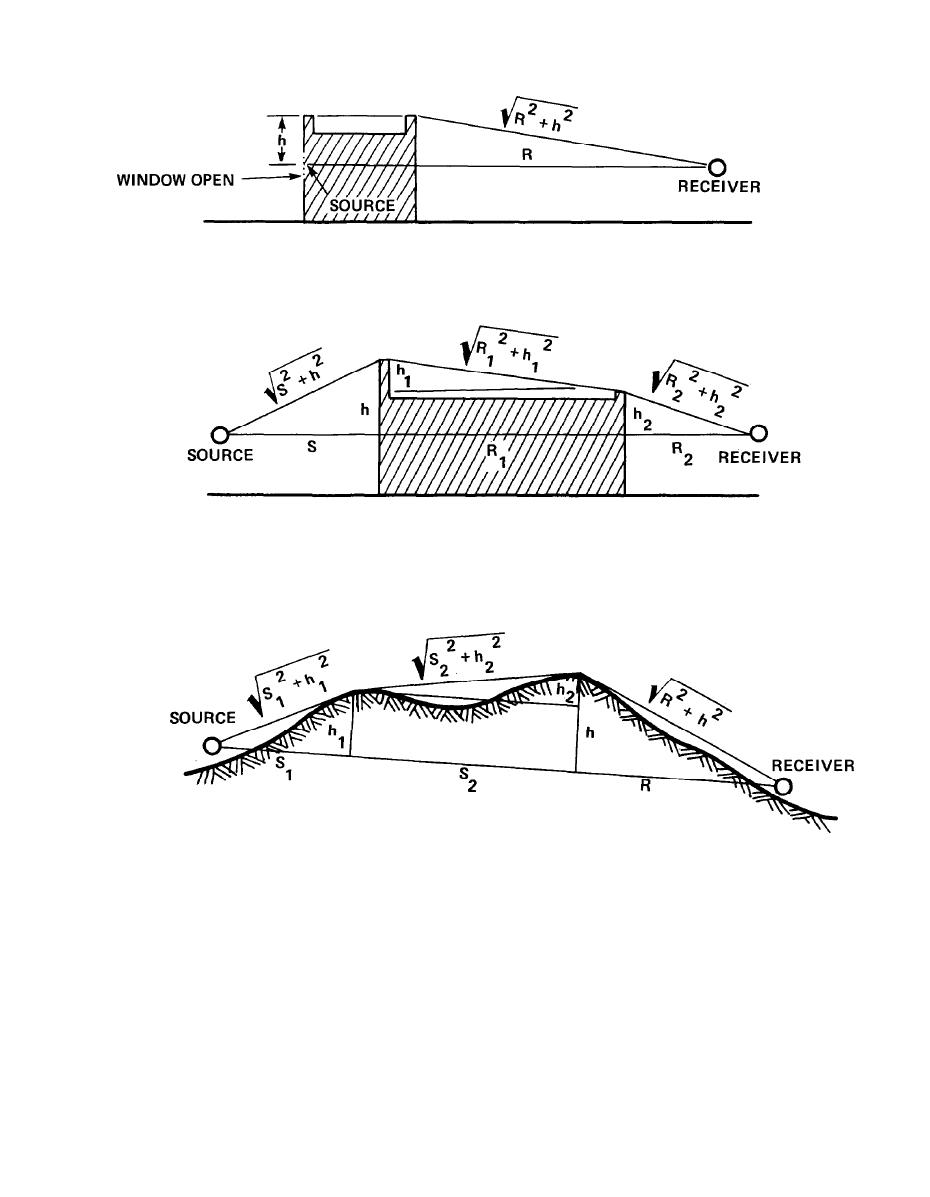
TM 5-805-4/AFJMAN 32-1090
Part A. Source Radiates From a Hole in the Wall
Part B. Compound Barrier, Constructed
Part C. Compound Barrier, Natural
Figure 5-8. Compound Barriers.
received inside the upper floor of the residence. If
upper windows of the residence (Co1 4 = Co1 2 -
the noise is excessive, what could be achieved by
Co1 3). Column 5 gives the noise reduction for the
moving the cooling tower to the lower roof position
type E wall (from table 5-7), Column 6 gives the
shown in Part E of the figure? Assume the entire
indoor SPL, and Column 7 shows the indoor SPL
PWL radiates from the position near the top of the
values that correspond to an NC-25 curve, sug-
cooling tower.
gested here for sleeping. Comparison of the esti-
mated SPL values with the NC-25 values shows
(1) Location "A". Table 5-8 summarizes the
excess noise of 8 to 12 dB in the 250- to 2000-Hz
data for this part of the analysis. Column 2 of the
bands (Co1 8).
table gives the sound power level of the cooling
tower, Column 3 gives the distance term for the
(2) Location "B". Table 5-9 summarizes the
480-foot distance (from table 5-4) and Column 4
data for this alternate location of the cooling tower
gives the calculated average SPL outside the
where it receives the benefit of the barrier effect of
5-11


 Previous Page
Previous Page
